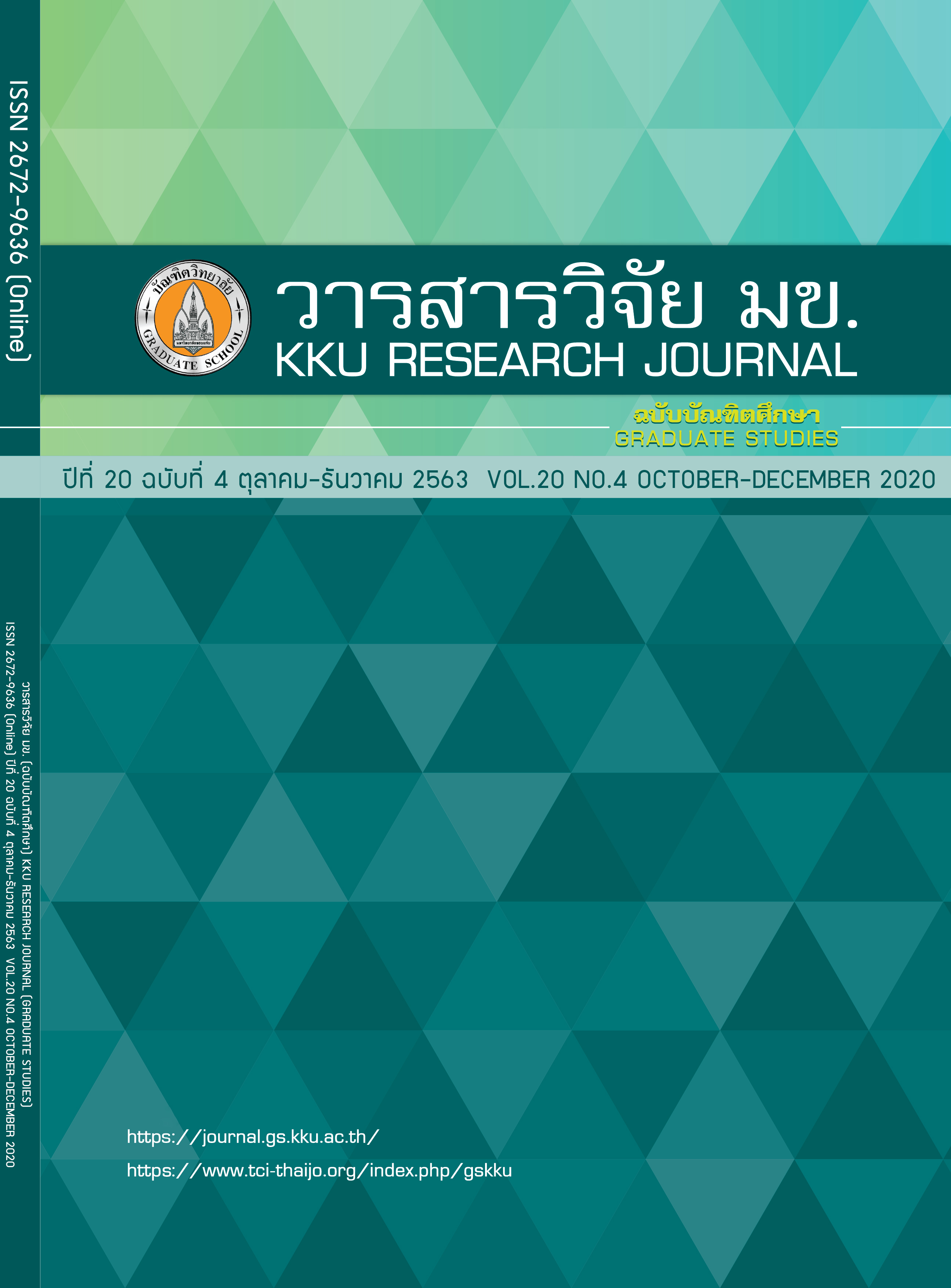The Study of Respirable Dust, Carbon Dioxide and Oxygen Concentration Due to Incense Burning in Temples in Mueang District, Surat Thani province
Keywords:
Respirable dust, Carbon dioxide, Temple, Burning incenseAbstract
The aim of this study was to measure the respirable dust, carbon dioxide and oxygen concentrations caused by burning incense in four temples in Mueang district, Surat Thani province. These included Pattanaram temple, Thambucha temple, PhutornU-thit Sittharam temple and Namueang temple. Air samples were collected around incense burners, worship rooms and surrounding outdoor was using PVC filters at flow rate of 2.5 L/min for 2 hours. The results showed that the areas around the incense burners in Pattanaram temple had the highest respirable dust and carbon dioxide concentrations as a result of large numbers of worshipers and incenses. The worship room in Thambucha temple had the highest oxygen concentration due to its large area. In Namueang temple, the respirable dust in outdoor area was higher than in the worship room and around the incense burners because it was located near the main road resulting in respirable dust from traffic. The respirable dust, carbon dioxide and oxygen concentrations from the four temples was considerably below standard. However, these concentrations were below standard, the levels could still affect the health of worshipers who were exposed to respirable dust from incense for long periods of time. Therefore, during incense burning, temple staff should open doors and windows, or conduct incense burning outdoors instead of in worship rooms. Installing a local exhaust ventilation system in worship room around incense burners would also help significantly with air quality.
References
Charoensuk N, Sangsirimongkolying R, Supawantanakul D, Suvachittanont W. Development of incense ingredients to reduce carcinogens in incense smoke. VRU Research and Development Journal Science and Technology. 2015; 10(3): 75-84.Thai.
Friborg JT, Yuan JM, Wang R, Koh WP, Lee HP, Yu MC. Incense use and respiratory tract carcinomas: a prospective cohort study. Cancer. 2008; 113(7): 1676-1684.
Lin TC, Krishnaswamy G, Chi DS. Incense smoke: clinical, structural and molecular effects on airway disease. Clinical and Molecular Allergy. 2008; 6(3): 1-9.
Rana S. Incense sticks: A potential source of indoor air pollution. International Journal of Environmental Engineering and Management. 2018; 9(1): 1-6.
Chatsantiprapa K. Toxicology of industrial chemicals. 1st ed. Faculty of Pharmaceutical Sciences, Khon Kaen University; 2009.
Tienboon P. Oxygen and human health. Journal of Parenteral and Enteral Nutrition. 2006; 17(1):12-17. Thai.
Wei C, Chencd M, Lin C, LeonGuo Y, Lin S, Hsieh W, et al. Household incense burning and infant gross motor development: Results from the Taiwan Birth Cohort Study. Environment International. 2018; 15:110-116.
Chen LY, Ho C. Incense Burning during Pregnancy and Birth Weight and Head Circumference among Term Births: The Taiwan Birth Cohort Study. Environmental Health Perspectives. 2016; 124(9): 1487-1492.
Dewangan S, hakrabarty R, Zielinska B, Pervez S. Emission of volatile organic compounds from religious and ritual activities in India. Environmental Monitoring and Assessment. 2013; 185(11): 9279-9286.
Zhanga J, Chena W, Lic J, Yua S, Zhaoa W. VOCs and particulate pollution due to incense burning in temples, China. Procedia Engineering. 2015; 121: 992-1000.
Bootdee S, Chantara S, Prapamontol T. Determination of PM2.5 and polycyclic aromatic hydrocarbons from incense burning emission at shrine for health risk assessment. Atmospheric Pollution Research. 2016; 7(4):680-689.
NIOSH. NIOSH Manual of Analytical Method for particulates not otherwise regulated, respirable 4th edition. Issue 3, Method 0600. USA. Department of Health and Human Services, Publ. 1998, p.1–6.
Mekaop K. The Study of particulate matter less than 10 micron (PM10) concentrations at Faculty of Agriculture, Natural Resources and Environment, Naresuan University: A case study in the indoor of instructors room and office of the secretary rooms. Bachelor of Science (Natural Resources and Environment). Phitsanulok: Naresuan University; 2015. 75 pages. Thai.
Bureau of Environmental Health, Department of Health, Ministry of Public Health. Indoor air quality standard for building. In: Operation manual for indoor air quality assessment for official. Bangkok: Bureau of Environmental Health, Department of Health, Ministry of Public Health; 2016. p. 5-2. Thai
Kanjanakrajang A, Chuaybamroong P. Measurements of carbon dioxide to determine the ventilation effectiveness in the classroom. Thai Science and Technology Journal. 2017; 25(6): 960-974. Thai.
Senthong P, Wittayasilp S. Measurements and health impacts of carbon black and BTEXs in photocopy centers. Archives of Environmental & Occupational Health. 2018; 73(3): 169-175.
NIOSH. NIOSH Manual of Analytical Method for Oxygen, 4th edition. Issue 2, Method 6601. USA. Department of Health and Human Services, Publ. 1994, p.1–3.
Sunakorn P, Kasemsap P. CO2 uptake performance of climbing plant wall. Journal of Architectural/Planning Research and Studies. 2010; 7(2): 173-187. Thai.



